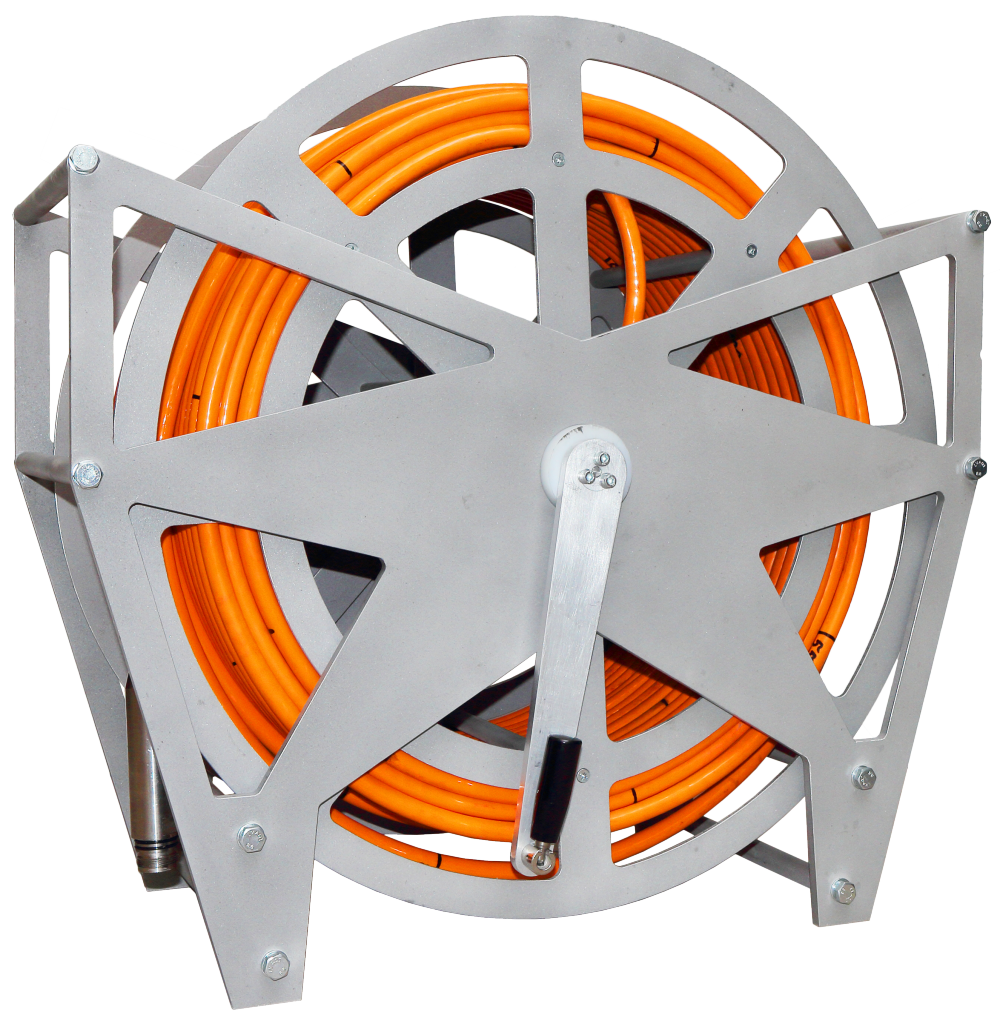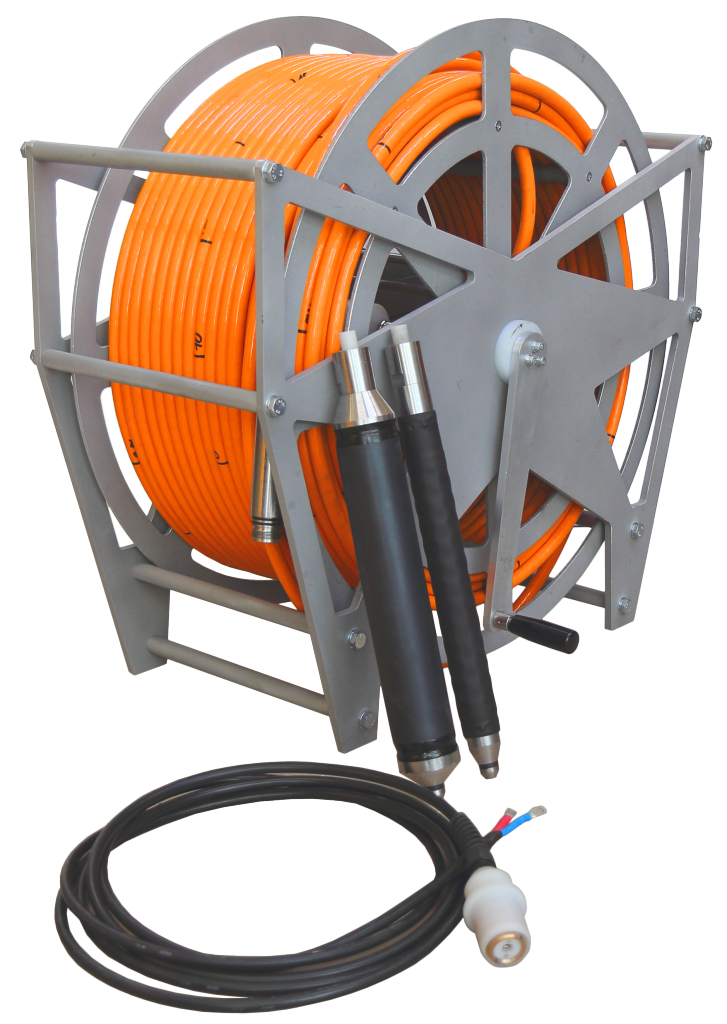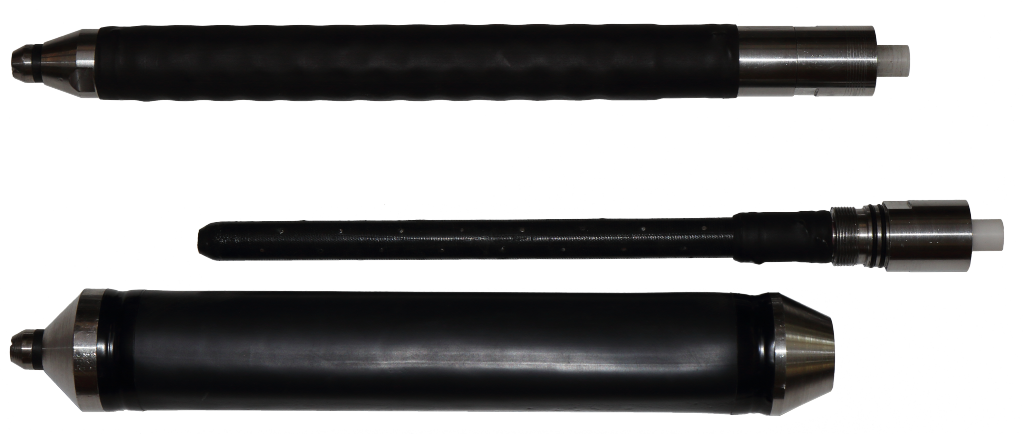Borehole Sparker Pulse
Borehole Sparker Pulse
Main features:
- Easily replaceable electrode group
- Broadband and stable signature
- Different groups for adjusting wavelet shape and its amplitude spectrum
- Wells diameter from 40 mm
- Supplied with specially designed cables, reels, or winches with HV slip ring
Borehole sparker Pulse is developed for generating high frequency pressure (P) waves in water-filled wells of up to 1000 m deep during crosshole seismic testing or tomography (CST), vertical seismic profiling (VSP) and other acquisition techniques with borehole source. The generation of polarized shear waves (SH and SV) is provided by sources SHock and GeoSV. All these sources require pulsed power supply Jack.
Jack energy source generates a short high-voltage electric pulse of considerable energy, which is transferred to the electrode group of the sparker ensuring the formation of ionized high-pressure gas-vapor cavities. With explosive expansion of the cavity, the pressure in it rapidly decreases, resulting in a drop in the temperature, vapor condensation, and subsequent collapse of the cavity, which does not generate parasitic pulsations.
We have developed special type of electrodes from unique material that prevents tips from wearing and provides exceptionally stable signature over a long period of time. The design of the sparker Pulse provides easy replacement of electrode groups including for controlling the source signature. Multi-electrode versions are necessary to generate high frequency seismic pulses. Special versions with a small number of electrodes provide a decrease in the signal frequency and a significant increase in the signal-to-noise ratio at long source to receiver distances in high attenuation medium. The standard diameters of the containers 36 / 60 / 80 mm allow to operate in wells with diameters starting from 40 mm.
Sparkers Pulse are supplied on geophysical reels equipped with high-voltage slip rings. Thus, one does not need to disconnect the source from the energy source while winding / unwinding the cable. The convenience and safety of work in deep wells are ensured by specialized winches BGW and BGW light.
Pulse application areas:
- Borehole seismic surveys on land and in water areas using cross-hole seismic testing and tomography (CST), vertical seismic profiling (VSP), high-resolution VSP, reverse VSP, and vertical seismoacoustic profiling (VSaP)
- Engineering surveys for the construction of highly sensitive facilities
- Search for karsts, fractured and deconsolidated zones, and mine geophysics
- Geotechnical monitoring of the soil foundation and determination of its load-bearing capacity, including in accordance with the ASTM D4428 / D4428M standard
- Cracks location in concrete hydroelectric dams
- Mineral exploration
Delivery set:
- Sparker Pulse with one electrode group and container
- HV cable
- Reel with high-voltage slip ring
- Energy source Jack connection cable
In addition to sparker Pulse the following items can be purchased:
- Winches BGW and BGW light
- Additional electrode groups and containers
- Energy source Jack with remote control JackPad
- Borehole hydrophone array WellStreamer
- Single and multi-level 3C borehole probes with spring (GStreamer), pneumatic (GStreamer-P), and electromechanical (GStreamer-E) anchoring system
- High frequency seismic stations Sigma 4+ and DAQlink 4
- Borehole sources of shear S-waves of horizontal (SHock) and vertical (GeoSV) polarization
- Borehole inclinometers INCLIS
- Downhole pulley
Specialized freshwater and marine sparkers, as well as electrodynamic boomers powered by specialized energy sources MultiJack which support the latest shooting technologies are available for marine high-resolution seismic surveys.
We can develop a custom borehole sparker and an energy source with the required power and configuration. For the correct specification of a custom design, please contact us using any method indicated on our website.
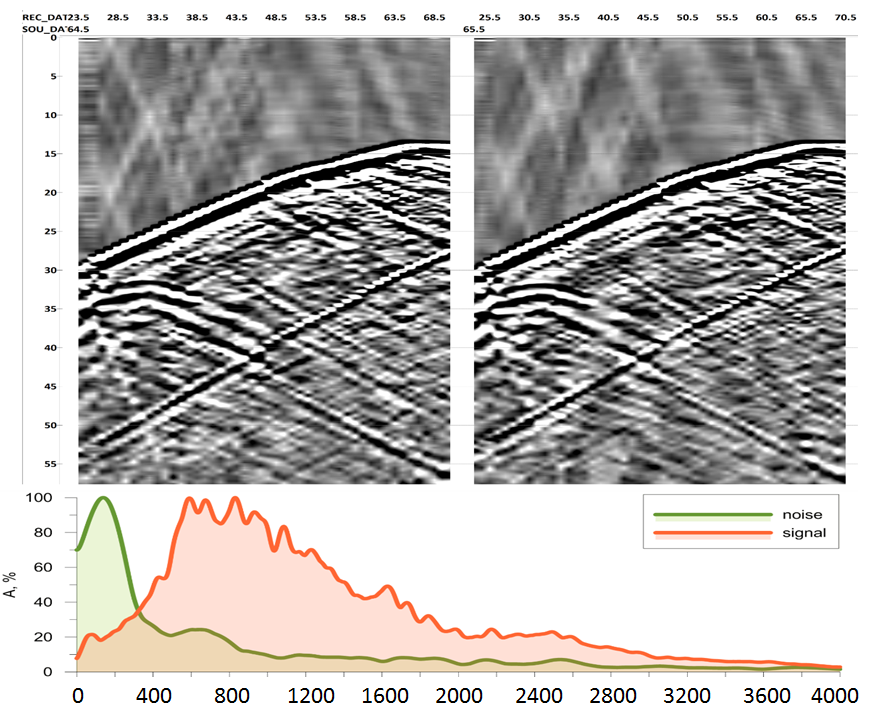 CST on P-waves field data obtained using sparker Pulse, energy source Jack, and hydrophone array WellStreamer:
CST on P-waves field data obtained using sparker Pulse, energy source Jack, and hydrophone array WellStreamer:
Above — crosshole seismic tomography field data; below — amplitude spectra of target waves and noise before the first breaks
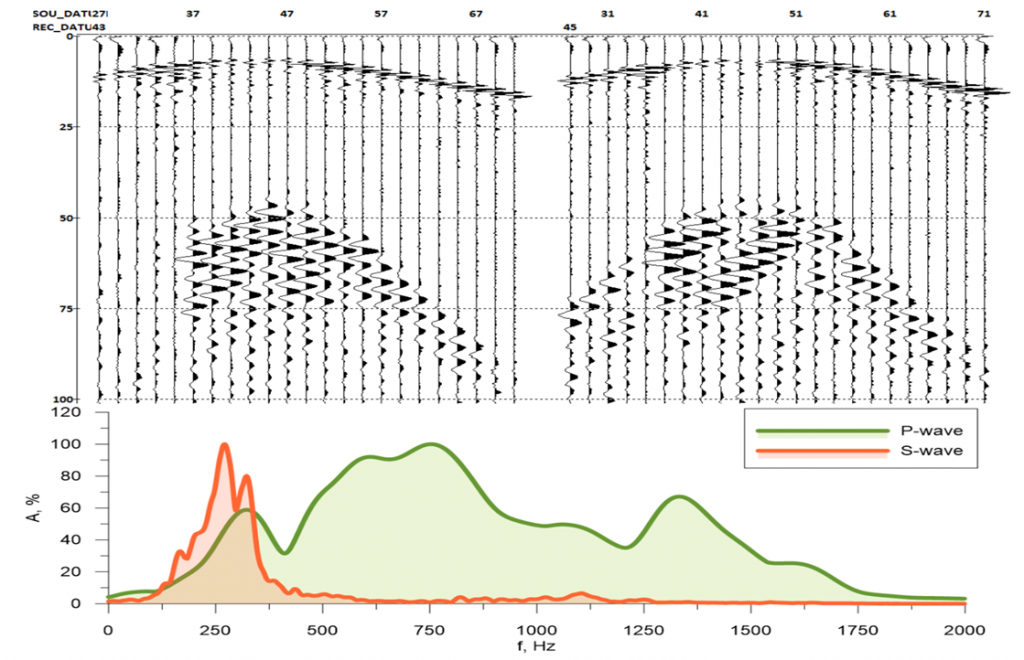 Example of raw CST field data obtained with 3C downhole probe and sparker Pulse.
Example of raw CST field data obtained with 3C downhole probe and sparker Pulse.
Above — crosshole seismic tomography field data; below — amplitude spectra for P and S waves.
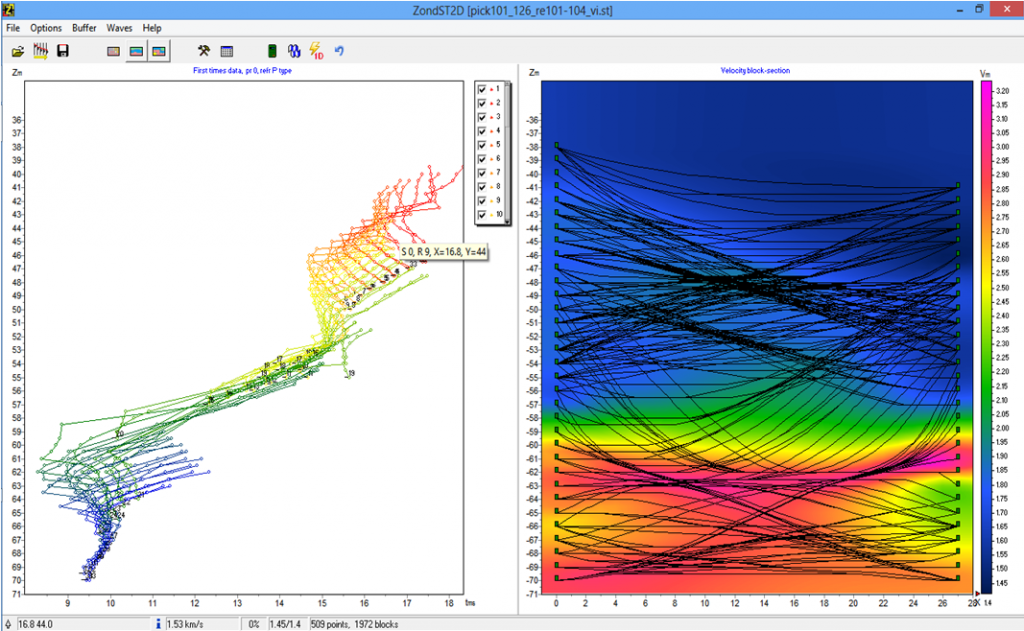 2D inversion in ZondST2d software.
2D inversion in ZondST2d software.
On the left, the comparison of observed and calculated hodographs; on the right, the reconstructed velocity model with ray tracing. Karst cavity in the right side of section in limestone basement; in the left part fractured and deconsolidated zone with decreased velocity.
| Operating voltage | up to 6,000 V |
| Operating energy | up to 1,500 J (optionally: up to 10,000 J) |
| Well diameters | from 70 mm (optionally: from 40 mm) |
| Maximum well depth | 1,000 m |
| Reel dimensions | 760×775×400 mm |
| Weight of the sparker with a reel | 60 - 70 kg (depends on the cable length) |
| Sparker diameter | 60 mm (optionally: 36 or 80 mm) |
| Sparker length | 500 mm |
| Cable type | coaxial with reinforced polyurethane insulation |
| Conductor cross-section | 10 mm² (optionally: 20 or 50 mm²) |
| Breaking strength of the cable | 3 kN (optionally: 5 and 30 kN) |


